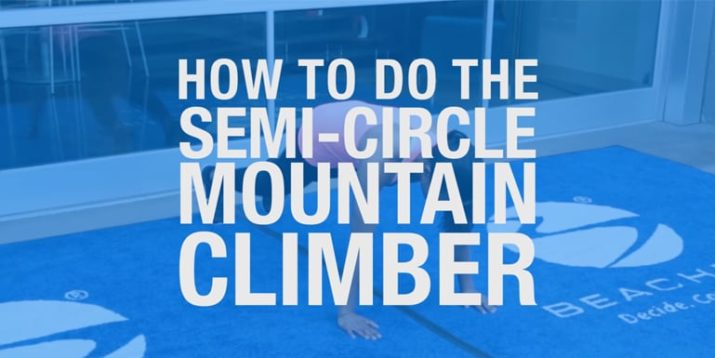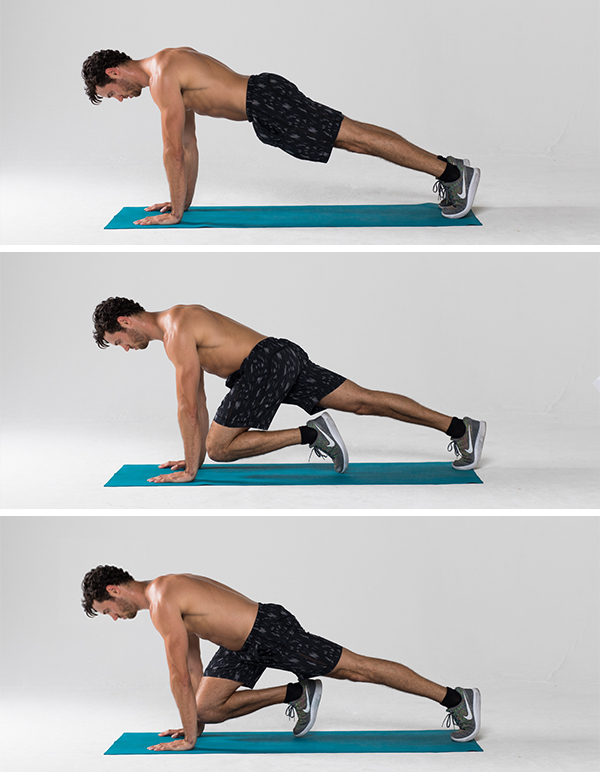How to Do the Semicircle Mountain Climber

If you’re familiar with the mountain climber exercise, then you know the kind of heart-pounding workout it delivers to your shoulders, core, and glutes. The semicircle mountain climber you’ll see demonstrated in the video below kicks the whole workout up a notch.
You’ll still drive your legs in and out while maintaining a push-up position. But instead of “running” in place, you’ll “run” while swiveling around on your hands, moving from side to side in a semicircle on the floor.
In so doing, you’ll double the benefits of this lung-busting exercise, increasing the challenge to every muscle between your shoulders and toes, and enhancing total-body coordination and agility.
You’ll want to remember to keep your arms straight and back flat, so that your entire body maintains a straight position from your head to your heels. Keep your toes touching the floor. And work those legs fast for maximum gain.
Here’s how to perform the move with perfect form.
Semicircle Mountain Climber: Step-by-Step Instructions
Target muscles: Shoulders, core, glutes, hips.
- Start in a push-up position with your body and arms straight, your back flat, and your hands aligned with (but slightly wider than) your shoulders. Brace your core, and hold it that way for the duration of the exercise.
- Without changing your lower-back posture, lift your right foot off the floor and bring your knee as close to your chest possible. Touch the floor with your toes, and then return to the starting position. Repeat with your left leg.
- Continue alternating legs, keeping your hands in place as you swivel from side-to-side in a semicircle on the floor. Do these quickly, as though you’re running up a mountain, not lazily strolling through a meadow.
Make It Easier

Perform a classic mountain climber, “running” in place instead of moving in a semicircle.
Make It Harder
Widen your grip, place both hands on a medicine ball, or perform a push-up or a burpee every time you come back to center.
Bonus tip: Keep your back flat. Rounding your back, which is the most common mistake people make when performing this exercise, can compress your spine and increase your risk of back injury.
